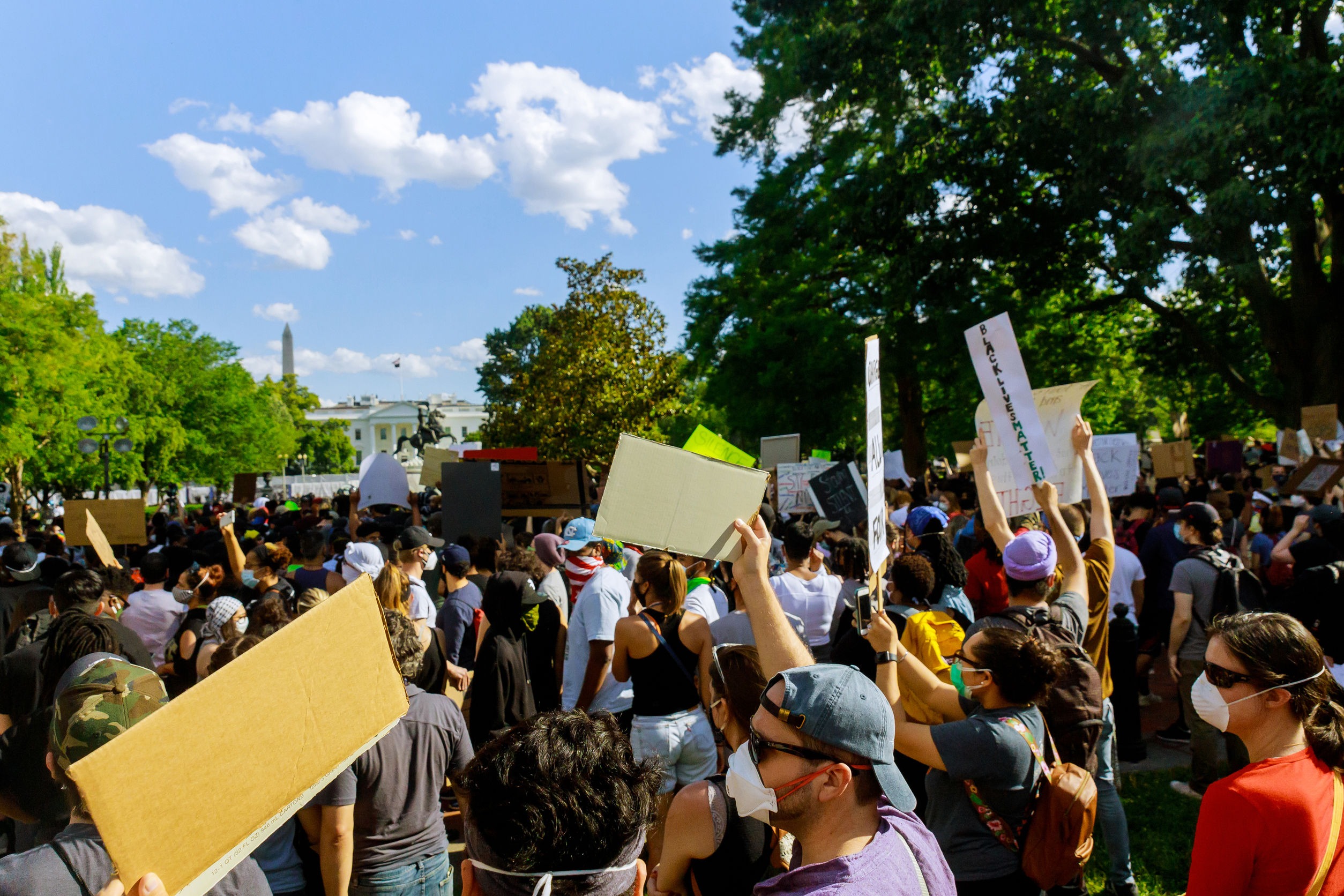How brands should respond to the BLM movement
Five professors weigh in on what steps brands should take right now, and in the future, to be part of the movement toward racial equality and inclusion.

Although the initial eruption of Black Lives Matters protests occurred in late May following the death of George Floyd, the movement remains, and as a result, companies and brands have grappled with how to respond. Many vocally expressed support for the BLM movement early on while others refrained from making statements, in the latter case often inciting criticism from members of the public on social media.
Even companies that expressed support were criticized by some activists as offering hollow lip service not backed by actions. As a result of such pressure, numerous CEOs and leaders of prominent companies and organizations have resigned, and even these have been viewed with skepticism.
The current social milieu has resulted in a PR minefield wherein companies may not know the best moves to take. The BLM movement is not about to quiet down and companies may still be uncertain about what to do. Five business communications experts, whose work includes advising companies in situations like this, offer some advice in their own words for how to navigate this rocky terrain.
James R. Bailey, professor of Leadership at the George Washington University School of Business
Branding, as a concept and activity, is fairly recent. In the not-too-distant past, branding was a product-based strategy that included an appealing logo, a catchy jingle, and maybe a celebrity endorsement. But branding today has become a direct appeal that is tethered to the moment, to the news cycle, to whatever urge the population is experiencing.
Therein lies the problem. Responding to the events of the day communicates a commitment that may not be consistent with the long-term image or value of a product or service. The original definition of “branding” is to be marked for life. Companies should not brand themselves around single events. It may seem like good business but it is not. With all due respect and contrition, branding around Mr. Floyd’s tragic death—or that of those who have suffered similar fates—smacks of opportunism and will be seen as disingenuous. People will see through it.
If a company is committed to social justice, they should act on it. They should enact employment practices that embrace diversity and inclusion. They should integrate meaningful, charitable work that engages social injustices. When backed by actions like these, companies can brand themselves around social causes like social justice (as opposed to single events) in a way that feels genuine and is consistent with the current climate.
Rebecca Weintraub, PhD, clinical professor of communication and director of the Online Master of Communication Management Program at the Annenberg School for Communication and Journalism at the University of Southern California.
The profound impact the murder of George Floyd had on the U.S. and the resulting outpouring of protests has encouraged, or forced, brands to take note. Many a CEO has sent emails to customers, bought full page ads, and generally found ways to show their commitment to diversity, inclusion, and racial justice.
These are good gestures, and appropriate immediate measures, but they are just that: gestures. Companies who are truly interested in generating change, within and without, must look at the systemic and systematic ways their approaches, practices, land procedures do not foster a culture free of discrimination and injustice—intended or unintended. They should begin internally.
As the country reopens and employees come back to offices, plants, and facilities, organizations should begin to engage their employees in these difficult conversations. Town halls are not the best vehicle for these as they tend to not be participative. Asking for employee input, holding small gatherings, encouraging employees to share their experiences, focusing on making immediate alterations both small and large will both create change and be evidence of the company’s commitment to making a difference.
Dustin York, director of undergraduate and graduate communication at Maryville University
Brands must speak out about racial injustice genuinely, specifically, and actionably. However, releasing general “Unity” posts on Instagram with the brand’s logo in the bottom right corner just won’t cut it.
Remaining political and socially neutral was the communication strategy for past generations (e.g. Michael Jordan saying “Republicans buy shoes, too” when asked to support a Democratic candidate). With the combination of private labels like Amazon Basics, and Millennials and Gen Z making purchasing decisions based on corporate values, brands must genuinely change and lean into conversations about race.
Here are three tactical pieces of advice:
1. Make requests of government agencies. Ben & Jerry’s is an example of a brand that has used their voice to demand that elected officials take action. Historically, the government pushed businesses into diversity. Now brands can be the ones pushing for change.
2. Provide action points. What will the brand do in the short and long term? Will the company allow time for employees to protest? Will companies vow to make their board of directors mirror the country’s diverse population?
3. Keep stakeholders informed. Create a diversity page on the brand’s website to post updates regarding their promise of change.
Sheena Howard, Ph.D., associate professor of communication for the Online Masters of Business Communication at Rider University.
As a first step, brands should be releasing statements that are explicitly in support of racial justice and be clear on their mission to end racial injustice in all its forms. These statements would be best served by being specific rather than broad—naming Black and Brown people who have been killed by police officers and rogue vigilantes, for example. Brands should be unambiguous on these issues.
Public statements are the low hanging fruit, however. These brands also need to implement swift and immediate action steps that coincide with their vision of a racially just world. For example, if they have Black and Brown employees that are paid less, pay raises need to be issued. If they have executive and VP teams that are all white, they need to promote qualified Black and Brown people who have historically been devalued and treated unfairly. Organizations that lack diversity need to commit to hiring Black and Brown people with financial incentives and more attractive benefit packages.
In short, these brands need to follow through on their statements with action and corrective action if their past practices have been questionable. Otherwise, they will be called out for their insincerity and hypocrisy. Finally, these action steps need to be taken not just in this moment but everyday after as well.
Dr. Meagan E. Brock Baskin, assistant professor of management at the College of Business Management and Marketing at the University of Tulsa
The almost daily occurrence of statements from companies following the George Floyd protests might have you, as an organizational leader or PR manager, pondering whether your organization should also make a statement. The answer is not as straightforward as it might seem. While diversity, equity, and inclusion are civil rights, statements by organizations have backfired in many instances. Thus, before brands make statements publicly, and especially if they are considering using social media to do so, they need to consider many factors.
Ongoing research that my colleagues and I have conducted suggests that people are becoming more influenced by virtual strangers than people that are important in their lives. This indicates that social media can be a very impactful channel for stakeholder communication and ultimately behavioral intentions.
Another consideration for organizations, one that is likely more important, are the stated and practices values of the organization. Is a statement of support for the Black Lives Movement supported by the organization’s practices? Before making such statements, organizations would be wise to review the underlying issues in their organization which suggest they might not—consciously or unconsciously—actually value diversity, equity and inclusions. Without admissions of wrongdoing and examples of corrective action, generic statements of support have no teeth.
While the opinions of these experts may vary on some of the specifics, a common thread they share is that public statements and gestures, by themselves, are not only inadequate responses to recent events, but will be seen as opportunistic and disingenuous.
Companies that wish to brand themselves as believing in equality and inclusion must take concrete actions, be it internally through more inclusive hiring and promoting practices, externally via putting pressure on lawmakers to take legislative action, or both.
For brands whose track records have not aligned with racial equality and inclusion, it is not too late to take corrective action. Doing so would be the necessary first step before making public statements about racial equality that might otherwise backfire or, at best, ring hollow.
George Bradley is a public relations professional and content writer with experience in consumer branding and marketing.






